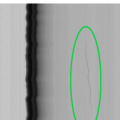Force field analysis is an important problem-solving technique that helps identify and analyze the forces that drive and resist change. It is a useful tool for problem-solving, process optimization, and decision-making. In this article, we will provide a comprehensive overview of force field analysis, including its purpose, process, and applications. Force field analysis is a powerful tool for understanding the dynamics of any situation. It helps identify the factors that are driving or resisting change, allowing you to make better decisions and optimize processes.
By understanding both the positive and negative forces at play in any situation, you can develop strategies to maximize positive forces and minimize negative ones. This article will take an in-depth look at force field analysis, exploring its purpose, process, and applications. We will discuss how it can be used to identify and analyze the forces that are influencing a situation, as well as how it can be used to develop strategies for achieving desired goals. By the end of this article, you'll have a comprehensive understanding of force field analysis.
Examples
To give you an idea of how this technique can be used in practice, let's look at two examples:Example 1: A healthcare organization wants to reduce patient wait times in its emergency department.Example 2:
A retail organization wants to increase customer satisfaction with its online store experience.Benefits of Force Field Analysis
Force Field Analysis is a powerful problem-solving and process optimization technique that helps teams identify potential areas of improvement. It offers a straightforward and easy-to-understand tool for understanding complex situations, allowing teams to gain insight into their environment and make better decisions.Using Force Field Analysis can help teams identify competing forces at play in any given situation, such as those that may be driving or preventing change. By understanding these forces, teams can develop strategies for overcoming obstacles, or for amplifying the effects of those forces that are driving successful change. Force Field Analysis can also help teams identify potential areas for improvement, as well as potential risks associated with making changes. This helps teams make more informed decisions about their process optimization initiatives, allowing them to avoid costly missteps.
In addition, Force Field Analysis can be used to identify issues that may be holding back progress. By understanding the underlying causes of any problems, teams can develop targeted solutions that will lead to more effective process optimization initiatives.
Steps Involved in Conducting a Force Field Analysis
Force Field Analysis is an effective problem-solving and process optimization technique that helps to identify potential areas of improvement. It is a straightforward tool that can help teams to gain insight into the competing forces that may be driving or preventing change. Below is an overview of the basic steps involved in conducting a Force Field Analysis: 1.Identify the Issue or Problem - The first step in conducting a Force Field Analysis is to identify the issue or problem that you want to analyze.This can be anything from process improvements to customer feedback to organizational culture. It is important to clearly define the issue you are trying to address before moving on to the next step.
2.Brainstorm Possible Driving Forces and Restraining Forces
- Once you have identified the issue, the next step is to brainstorm possible driving forces and restraining forces. Driving forces are those that are pushing for change, while restraining forces are those that are preventing change from happening.It is important to list as many forces as possible in order to get an accurate picture of the situation.
3.Identify Each Force’s Level of Influence on the Issue
- After listing all of the possible driving and restraining forces, the next step is to identify each force’s level of influence on the issue. This can be done by assigning a score of 1-10 (with 1 being low and 10 being high) to each force, depending on its impact on the issue.4.Evaluate the Driving Forces and Restraining Forces
- Once each force has been assigned a score, it is time to evaluate the driving forces and restraining forces. This step will help you determine which forces are having the most impact on the issue, as well as which ones should be prioritized when developing solutions.5.Identify Potential Solutions or Strategies for Overcoming Obstacles
- After evaluating the forces, the next step is to identify potential solutions or strategies for overcoming obstacles. This can include anything from implementing process changes to training employees on new skills.It is important to consider all possible solutions before moving on to the next step.
6.Implement Your Chosen Solution or Strategy
- Once you have identified a potential solution or strategy, it is time to implement it. This can involve anything from developing an action plan to allocating resources. It is important to have a clear plan of action in place before moving forward.7.Monitor Progress and Adjust Your Approach as Needed
- The last step in conducting a Force Field Analysis is to monitor progress and adjust your approach as needed. This will help ensure that your chosen solution or strategy is having the desired effect and that any obstacles are being addressed accordingly. In conclusion, Force Field Analysis provides a powerful and straightforward tool for understanding the underlying dynamics of complex situations and for developing strategies for improvement.By identifying the competing forces at play and the potential areas of improvement, teams can gain insight into their environment and make more informed decisions. With its easy-to-understand approach, Force Field Analysis is a valuable tool for any team looking to optimize their processes and solve problems.


